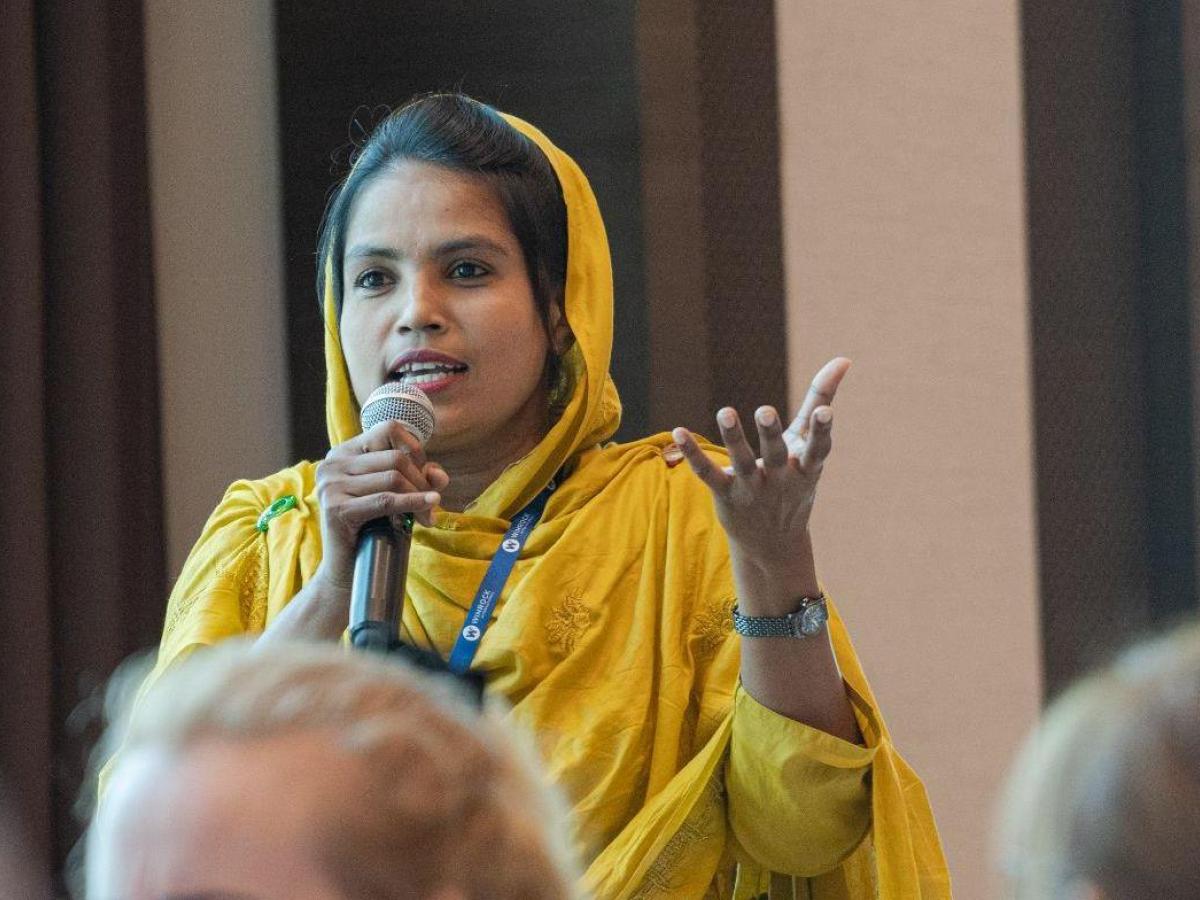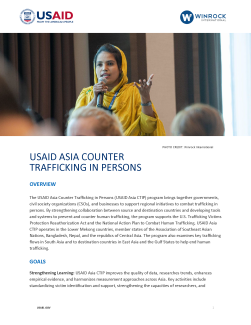OVERVIEW
The USAID Asia Counter Trafficking in Persons (USAID Asia CTIP) program brings together governments, civil society organizations (CSOs), and businesses to support regional initiatives to combat trafficking in persons. By strengthening collaboration between source and destination countries and developing tools and systems to prevent and counter human trafficking, the program supports the U.S. Trafficking Victims Protection Reauthorization Act and the National Action Plan to Combat Human Trafficking. USAID Asia CTIP operates in the Lower Mekong countries, member states of the Association of Southeast Asian Nations, Bangladesh, Nepal, and the republics of Central Asia. The program also examines key trafficking flows in South Asia and to destination countries in East Asia and the Gulf States to help end human trafficking.
GOALS
Strengthening Learning: USAID Asia CTIP improves the quality of data, researches trends, enhances empirical evidence, and harmonizes measurement approaches across Asia. Key activities include standardizing victim identification and support, strengthening the capacities of researchers, and developing tools to measure program success. The program addresses the emerging role of TIP in scam centers, in which individuals are exploited and forced under duress to commit online fraud.
Increasing Regional Coordination and Strengthening Civil Society Action: USAID Asia CTIP reinforces regional CSO networks by improving online information sharing, building skills, and developing tools like Legal Impact Hubs for better cross-border prosecution of TIP cases. The program supports the implementation of national and regional agreements through data-driven advocacy. To respond to the needs of vulnerable people in the region, the program engages migrants and TIP survivors in program design, implementation, and evaluation.
Increasing Opportunities for Private Sector Leadership: The program collaborates with businesses operating in pivotal sectors such as construction, agriculture and domestic services to develop and implement monitoring tools aimed at combating human trafficking and exploitation of vulnerable laborers throughout the recruitment to employment process. By promoting accountability within the private sector particularly in high-risk industries for trafficking, the initiative aims to instigate enduring systemic changes that mitigate the prevalence of exploitation.
KEY RESULTS
Established an online network of over 1,200 CTIP CSOs for enhanced collaboration and best practice exchange, including a Victim Journey Map to track trafficking routes for informed interventions and investigations.
Engaged 92 CSOs in the Victim Case Management System, improving TIP survivor support and CTIP coordination.
Organized four “Evidence2Action” summits with over 1,200 participants regional networks and CTIP research.
Trained over 100 lawyers and practitioners on cross-border prosecution, bolstering national and regional networks.
“Labor of Loss” podcast reached over 2,900 listeners, offering insights from survivors and frontline organizations.
2.5 million migrants accessed a migrant-led social media support platform for labor abuse assistance, leading to 779 complaints and $75,000 in total compensation refunded to migrants for lost wages.
Developed over 110 learning products, gaining 40,000 views from stakeholders in the region.
Developed and expanded the Monitoring, Evaluation and Learning (MEL) Toolkit, screening over 350 indicators, reaching over 4,700 users for measuring CTIP work rigorously.
Developed the Gender Equality and Social Inclusion (GESI) Toolkit in multiple languages for partner’s program integration.
Established five private sector partnerships to monitor and report labor abuses in diverse industries.


